Keynote Speakers
|
Keynote Speaker I : Col. Dr. Settapong Malisuwan Vice Chairman, National Broadcasting and Telecommunications Commission (NBTC) Title : The Impact of Spectrum Auction on Thailand’s country competitiveness. Abstract : | 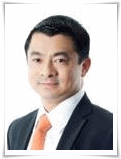 |
Nevertheless, though Thailand is now able to benefit from the use of 3G, most smartphones can already hold data rate that beats what the current network can provide. This has pushed customer demand for data rate even higher, subsequently the exponential rise in demand for multimedia services has bombarded networks throughout the world ensuing congestion and traffic in data usage.
The sky-scraping demand for data has made 4G vital to the advancement of telecommunication services, because it can provide higher speed and bandwidth which leads to higher efficiency, capacity and flexibility of data usage. While the concessionaire of 1800 MHz expires in September 2013, therefore it is crucial to prepare for 4G. As the national telecommunications regulator, NBTC collaborated with ICT to conduct the 90 days test of 4G in Bangkok and Mahasarakham. As telecommunications investment is expected to promote economic growth and increase the country’s competitiveness, NBTC and ICT consider this an imperative investment.
4G or Long Term Evolution (LTE) will probably deliver to customers data download rate which is 10 times of 3G while also maintaining a more efficient use of radio spectrum which is a scarce resource. As a result, the socio-economic benefits gained from LTE include higher productivity, increased sales from higher capability of firms to provide higher customer services, direct cost reductions through real time communication, higher employee motivation, and enhanced organizational flexibility hence, better decision making. As a result, 4G LTE will benefit Thailand by enhancing human capital, increased GDP and most importantly lead to higher country competitiveness.
Col. Dr. Settapong Malisuwan received his PhD in Electrical Engineering (Telecommunications), specializing in Mobile Communication Systems from Florida Atlantic University (State University System of Florida), Boca Raton in 2000. He received an MSc in Electrical Engineering in Mobile Communications System, from George Washington University in 1996, an MSc in Electrical Engineering in Telecommunication Engineering from Georgia Institute of Technology in 1992 and a BSc in Electrical Engineering from the Chulachomklao Royal Military Academy, Nakhon-Nayok, Thailand in 1990. Colonel Settapong is currently the Vice Chairman and Board Member in the National Broadcasting and Telecommunications Commission (NBTC), Thailand. His interests are in efficient spectrum management and Telecommunications policy and management in Thailand.
|
Keynote Speaker II : Prof. Apisak Worapishet
Assistant President (Research), Mahanakorn Universityh of Technology, Bangkok, Thailand Title : Singly terminated tapered drain line for enhanced gain-bandwidth distributed amplification in CMOS at microwave to millimeter wave frequencies and beyond Abstract : The high level of analog/digital mixed-signal integration and cost competency have made CMOS integrated circuit technology the dominant implementation choice to serve the exploding market for state-of-the-art wireless and wirelined communication devices. With ever-increasing demand for operating bandwidth and frequency from microwave to millimeter-wave spectrums and beyond, considerable research efforts have been witnessed to push the frequency limit of CMOS circuits for a given technology node. | 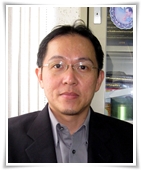 |
One particular technique borrowed from microwave monolithic integrated circuits using compound semiconductor technologies makes use of on-chip transmission line structures for bandwidth extension via distributed amplification. The major drawback of the distributed amplifiers, however, is the need to avoid the interference from the reverse waves along the drain transmission line through an idle termination. As a result, the voltage gain is invariably reduced by half as compared to the conventional circuit. This, together with inherently low transconductance of CMOS transistors and lossy on-chip transmission lines in silicon substrates, has resulted in only modest gain-bandwidth performance in CMOS distributed amplifiers.
In order to circumvent the gain reduction while maintaining the bandwidth extension in the distributed amplifiers, the impedance tapering of the drain line has been developed. The technique entirely omits the idle drain termination and relies upon the partial reflections of the forward waves at the impedance tapering junctions to counterbalance the reverse waves. The tapering technique was successfully demonstrated to provide simultaneous high gain and bandwidth in CMOS distributed amplifiers. The feasibility of the impedance tapering is now extended to another key circuit building block in wirelined communication – the transimpedance amplifier (TIA). In particular, a novel TIA topology, namely the folded distributed transimpedance amplifier (FDTIA), is developed for very low noise, high transimpedance gain and wide bandwidth performances. The low noise characteristic of the FDTIA is based upon the partial thermal noise cancellation of multi-stage distributed amplifiers at intermediate-to-high frequencies approaching the cut-off frequency. In order to avoid excessive gain reduction associated with a long lossy on-chip transmission line, the gate line of the multi-stage amplifier is folded in half and the input current signal is fed at the folding node, thereby essentially forming the FDTIA topology. The output of the FDTIA is equipped with the impedance tapering technique to enable signal combination with a high gain-bandwidth product. A four-stage FDTIA has been designed and fabricated in a 0.13m CMOS process, with experimental and simulation results to verify its performance superiority in comparison with the existing TIA topologies.
Prof. Apisak Worapishet received the B.Eng. degree (first-class honors) in electrical engineering from the King Mongkut’s Institute of Technology, Ladkrabang, Bangkok, Thailand, in 1990, the M.Eng.Sc. degree in electrical engineering from the University of New South Wales, Kensington, N.S.W., Australia, in 1995, and the Ph.D. degree in electrical engineering from Imperial College, London, U.K., in 2000. Since 1990, he has been with Mahanakorn University of Technology, Bangkok, Thailand, where he is currently a Professor of electronic engineering. He is also the Director of the Mahanakorn Microelectronics Research Center (MMRC), the Director of the Microwave and Millimeter-Wave Research Center, and a Lecturer with the Department of Telecommunication Engineering. His current research interests include very low-voltage CMOS analog integrated circuits, bio-medical circuits, wirelined and wireless RF CMOS circuits, and microwave/millimeter-wave passive/active circuits.
Prof. Worapishet is the recipient of the 2009 British Council Researcher Exchange Program Award, and the 2007 Outstanding Academic Staff Award from the Association of Private Higher Education Institution of Thailand. He is a senior member of the Institute of Electrical and Electronic Engineering (IEEE), and a member of the Institute of Electronics, Information and Communication Engineers (IEICE). He also serves on the Analog Signal Processing Technical Committee (ASPTC), IEEE Circuit and System Society (CASS).
|
Keynote Speaker III : Prof. Akira Taguchi
Musashi Institute of Technology, Japan Title : Color Image Enhancement Method Based on Visual Sensitivity Abstract : Image enhancement is used to improve the quality of an image for visual perception of human beings. Recent years, gray image enhancement technology has developed rapidly. The main techniques for image enhancement such as contrast stretching, slicing, histogram equalization. However, we usually deal with color images in daily life. The generalization of these techniques to color images is not straight forward. Unlike gray scale images, there are some factors in color images like hue which need to be properly taken care of for enhancement. | 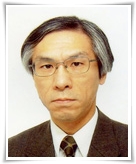 |
Hue (H), saturation (S) and intensity (I) are the attributes of color. Hue is that attribute of a color which decides what kind color it is. For the purpose of enhancing a color image, it is to be seen that hue should not change for any pixel. If hue is changes then the color gets changed, thereby distorting the image. Hue preserving is necessary for color image processing.
This talk reviews recent hue preserving color image enhancement methods. These methods are divided into two groups, one is performed HSI or YCbCr color space, and the other is performed in RGB color space. In the HSI or YCbCr color space, we can easy to preserve hue and obtain colorful images. However, transforming from one space (i.e., RGB) to another (i.e., HSI or YCbCr) and processing in the transformed spaces usually generate gamut problem. The processing has been done in RGB space is avoided the gamut problem. However, enhanced images are looked like gray-scale images. We evaluate advantages and disadvantages of a lot of enhancement methods in two groups.
Dr. Taguchi received the B.E., M.E. and Dr. Eng. degrees in electrical engineering from Keio University, Yokohama, in 1984, 1986 and 1989 respectively. In 1989, he joined Musashi Institute of Technology. Musashi Institute of Technology was renamed as Tokyo City University, where he currently a Professor at the Department of Biomedical Engineering. From 1993 to 1994, he spent one year at the Signal Processing Laboratory, Tampere University of Technology, Finland as a Visiting Researcher.
His research interests are in the areas of digital signal processing and video processing including nonlinear signal processing and color image processing.
He served as an associate editor and editor of IEICE Trans. on Fundamentals from 1999 to 2000 and from 2001 to 2003, respectively. He was appointed as the Technical Program Track Co-Chairs for IEEE ISCAS 2005, the Technical Program Chair for IEEE ISPACS 2003 and IEEE ISCIT 2006. He is currently an adviser the Technical Group of Smart Info-Media System of IEICE and a Special Session Co-Chairs of IEEE ICASSP 2012.
Keynote Speaker IV : Dr. Yasuyuki Nakajima Title : Toward User-Centric Smartphone Life in the Big Data / HTML5 Era Abstract With the rapid progress of mobile broadband networks, fast processor, touch panel based user interface, and full of rich applications, mobile phone world has been changing drastically from feature phones to smartphones. At the same time, smart phones are also becoming to replace conventional portable devices such as music player, video game player and personal navigation devices(PND). | 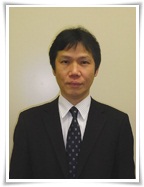 |
The other important issues are big data analysis and HTML5 based applications. Since a smartphone can be a kind of life log device, opt-in based use of such log data can be powerful tools for users as well as telcos for such purposes as personalized coupon delivery by realtime analysis of user’s preference and location. HTML5 based applications are also expected to be very attractive for both content providers(CPs) and users. Currently, CPs have to develop smartphone applications for each OS like iOS and Android. Although various tools can be used to simultaneous development for muti-OS, it still takes time for testing and quality assurance. Since HTML5 based applications can be directly deployed to various OSs as long as their browsers support HTML5, users can enjoy latest applications without worrying about their OS.
In the talk, we will present these issues and also present recent R&D activities toward forthcoming smartphone based lifestyle.
Dr.Yasuyuki Nakajima has been involved in video coding/transmission, MPEG standardization, and compressed domain MPEG editing/transcoding/indexing at KDDI R&D Labs. In 2007, he was General Manager of Media Service Planning Dept. at KDDI, where he conducted music and video delivery services to KDDI’s mobile phones(au) and IPTV STBs(au HIKARI). From 2011, he has been President CEO of KDDI R&D Labs., where he is responsible for R&D activities ranging from mobile/photonic networks to multimedia applications. Dr.Nakajima received master’s degree from Waseda University in 1982 and Ph.D. from Tokyo Institute of Technology in 2002
Keynote Speaker V : Prof. Dr. Sarawut Sujitjorn Title : Thai Synchrotron Light Source and Its e-Beam Stability Abstract This lecture contains two parts. | 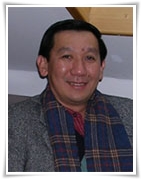 |
Prof. Dr. Sarawut Sujitjorn is the director of Synchrotron Light Research Institute of Thailand, also, a professor of electrical engineering. He gained his PhD in Electronic & Electrical Engineering from the University of Birmingham, UK. His specialization covers control engineering, metaheuristics and power converter applications.